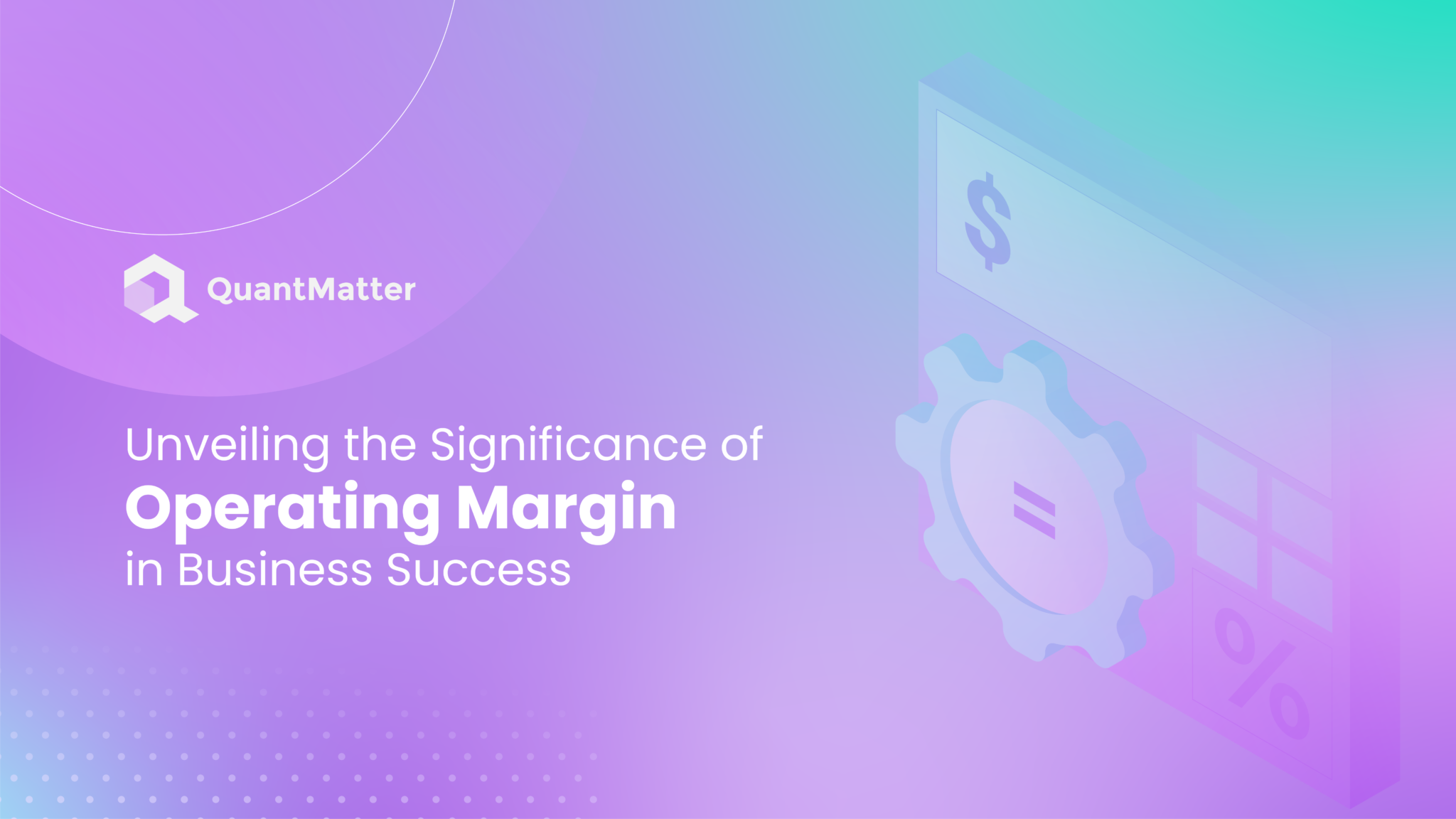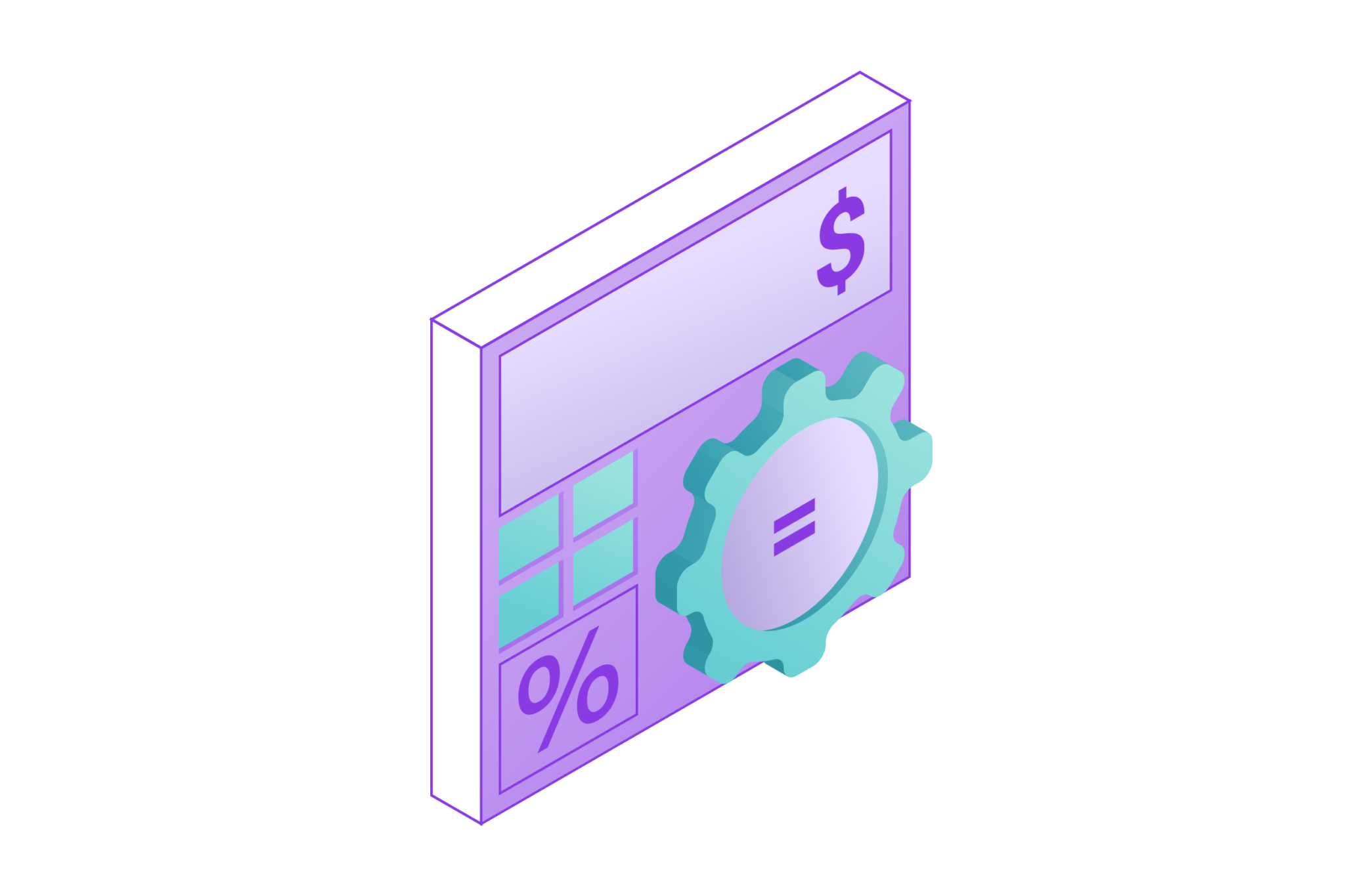
Operating margin stands as a key financial figure that gives a meaningful understanding of a company’s profitability and operational efficiency. The profit margin index, a fundamental measurement used in financial analysis, is one of the key performance indicators because of its complex construction and capacity to display various aspects of a company’s efficiency and profitability. It’s a resilient indicator that aids stakeholders in viewing the firm’s cost management from a holistic perspective and also evaluating the ability of the company to convert its core operations into profits.
This measure brings the complex relationship between money generation and money management into focus, allowing a deeper insight into company profitability and sustainability prospects. Since the operating margin is the most reflective measure of a business model’s strength and longevity, investors, analysts, and other stakeholders alike see it as an intrinsic value. It is an important metric for investors and stakeholders, and it is also a key metric in a company’s ability to convert the revenue earned into profits after paying operational expenses. There, we will enter into the subject of operating margin, its calculation, and its importance in the lives of businesses.
Understanding Operating Margin

Operating margin (or operating profit margin), a widely used term meaning the same thing, is an essential financial measure for which a business is evaluated by how effectively it generates profits from its business operations. In essence, it represents the profit retained after subtracting operating expenses from the revenue. The cost items normally cover direct expenses linked to the manufacturing of goods or rendering of the service, for example, labor costs, rent, utilities, raw products, and other daily operational expenditures.
The formula to calculate operating margin is to subtract operating expenses from gross profit and divide the resulting amount by revenue. Expressed as a percentage, it is calculated as:
Source: Wall Street Prep, 2024
The use of this formula will therefore enable the stakeholders to have foresight into whether the company is effectively utilizing its resources to make profits from its core operations. A higher operating margin is suggestive of better profitability and operational efficiency of a business, as a larger part of revenue is retained after paying off the operations costs. Its opposite may be an indication of inefficiency in operations or the fact that expenses are greater than revenue.
Operating margin is a vital parameter for industry or sector analysis in comparative terms that helps investors and analysts judge the financial performance of companies. It allows firms of different sizes and scopes to be compared by using an unambiguous measure of profitability as a benchmark.
Operating margin needs a distinction from the net profit margin. While working with the margin of operation, which considers solely operational efficiency and profitability by taking into consideration only the operating expenses, the profit margin comprises all the expenses, including non-operating expenses such as taxes, interest payments, and one-time gains or losses. Thus, profit margin on net income gives a wider view of the overall profits, but operating margin evaluates the efficiency of core business operations specifically.
Every industry shows distinct ranges of operational margins because of its unique attributes and operating models. As an example, industries with steep entry barriers or those that are highly innovative and bear a lot of intellectual property tend to have elevated operating margins. For instance, these are information technology, pharmaceuticals and software development. On the other hand, industries with very strong competition, thin profit margins, and high capital requirements can have low operating margins. For example, consider retail, grocery, or airlines.
Companies can utilize several different strategic methods for improving their operating margins. These may include cutting costs by implementing cost-saving measures, improving production efficiency through process optimization, raising prices or sales volumes, diversifying revenue streams, or investing in research and development to promote product innovation and differentiation.
Significance of Operating Margin

The value of operating margin is that it allows a company to see a clear picture of its operating efficiency and effectiveness. Here are several of the significances:
Efficiency Benchmarking
Operating margin constitutes an indispensable yardstick for assessing a company’s operational success relative to its rivals in the same business. By comparing the operating margins of similar companies, investors and analysts can reveal outliers and determine if the company successfully controls its resources to generate revenues. Additionally, this benchmarking gives companies a chance to set performance goals and reference points for improvement, which fosters a culture of continuous optimization and improvement within the company. Such companies that demonstrate consistently high operating margins usually possess a competitive edge in their industries, given that they can deploy resources more effectively, invest in innovation and growth initiatives, and gain protection from market competitors.
Besides, benchmarking helps stakeholders determine which practices and strategies are used by the most performing firms. As such, these can be emulated or adapted to enhance performance. Through operating margin analysis, and by taking a wider industry perspective, companies get a glimpse of market dynamics, competitive standing and differentiating points. Through benchmarking, this process supports healthy competition and encourages companies to improve their operational performance, thereby causing an increase in efficiency and profitability across the whole industry.
Performance Evaluation
The operating margin is one of the key parameters for assessing a company’s financial performance and health. A high operating margin implies that the company is making significant profits from its traditional operations, which is one of the major criteria of financial health and sustainability. This measure gives vital information about how effective the company’s cost structure, pricing strategy, and revenue generation are. In order to evaluate management decisions, identify potential risks or problems, and make better investment decisions, investors and analysts typically analyze operating margins over time and compare them to historical trends.
Also Read: Market Making: Strategies and Techniques (August 2024)
Moreover, operating margin helps both investors and management assess the quality of the underlying earnings and the company’s business model. A company usually perceived as well managed is one with a profitable and resilient operation that can create long-term value for shareholders. This means that the company can consistently deliver a high operating margin. On the contrary, an operating margin that is declining might raise questions about declining profitability, operational ineffectiveness, or competitive factors. Therefore, operating margin provides the essential benchmark to assess financial performance, make investment decisions and discover potential for profit improvement within companies.
Financial Health Indicator
The operating margin is a key measure that shows how well a company does financially and if it is sustainable. A higher operating margin means that a firm is operating efficiently such that its sales turn into profits after operating expenses are covered. This is usually an indication that the management’s doing well, cost control is helpful, and the industry enjoys great competitiveness. Investors and stakeholders regard operating margin as a good sign of financial soundness and profitability; hence, the business’s reputation and its financial attractiveness will increase.
Moreover, operating margin offers visibility into a company’s ability to generate cash flow from its main business activities, which is very important for the funding of growth initiatives, the servicing of debt obligations, and the return of value to shareholders by means of dividends or share buybacks. A consistently high operating margin suggests that a company boasts a sustainable business model with solid fundamentals, which consequently makes it more resistant to market fluctuations or industry disruptions. On the other hand, a low or declining operating margin can raise questions about the company’s ability to generate profits, manage costs efficiency and compete in the market. Thus, operating margin becomes the decisive indicator of the company`s overall financial health and sustainability.
Investment Decision Making
Operating margin is a very important factor in the decision-making investment processes for individuals as well as institutional investors. Operating margin is one of the most important tools investors, in turn, use to assess companies’ financial performance and future growth prospects. Often, a high operating margin is seen as an indicator of operational excellence and profitability, which is a driver of interest of investors who are searching for firms with strong financial fundamentals and growth potential. On the other hand, a low operating margin might be off-putting for investors and indicate the business may be facing risks or challenges.
Operating margin affects how investors evaluate a particular company, which determines its valuation and growth prospects. Companies with significant operating margins are usually ascribed by investors to higher valuations based on the expectation of continued profitability and further earnings growth. Thus, operating margin can become a critical factor in the stock price and market valuation of a company. Investors may also employ the changes in operating margin over time as good early indicators of future performance and adjust their investment strategies as a consequence. As a result, operating margin is a crucial measurement for investors striving to make sound investment decisions and deploy capital to firms demonstrating impressive financial success and business expansion.
Challenges in Improving Operating Margin

Increasing the operating margin is a herculean task for companies, as it usually involves long-term planning, organizational coordination and a collective effort of all the functional areas. Here are some key challenges companies may encounter when seeking to enhance their operating margins:Here are some key challenges companies may encounter when seeking to enhance their operating margins:
Cost Reduction Pressures
Companies have a hard time of it with respect to cost reductions to increase operating margins, in most cases. Cost cuts may bring quick gains in profitability, but executing them thoughtlessly will open doors to undesired consequences such as lower quality or morale.
Achieving cost reductions could mean restructuring activities, reviewing contracts with suppliers, or automating processes, all of which could lead to resistance from stakeholders. However, businesses have to weigh up the process of cost reduction with the obligation to offer value to customers and the need for investments in areas that are critical for success in the long run, in particular, research and development or employee training. Effectively dealing with cost reduction impulses requires good communication, stakeholder involvement, and the strategic selection of cost-saving opportunities.
Investment Trade-offs
Striking a healthy balance between building short-term cost saving strategies and long-term growth initiatives represents a major hurdle for companies striving to improve their operating margins. Saving efforts through cost containment may boost earnings straight away, but they can hamper investments in innovation, market growth, or workforce development, which are the necessities for long-term growth.
The trade-offs between cost cutting and strategic investments should be measured very carefully, balancing the incremental cost savings against the long term value creation opportunities that can be found in investments in areas such as product development, marketing or infrastructure. Navigating these different choices needs an inclusive approach to strategic planning that takes into account both the immediate financial goals and the long-term strategic objectives. Companies should put emphasis on investments meant to improve competitiveness, generate revenue growth, create value for clients, and, at the same time, identify and cut costs that do not add value. Achieving the right balance between cost reduction and investment depends on performing in-depth financial analysis, devising alternative scenarios, and aligning stakeholders.
Operational Complexity
The challenge of the entire operational complexity can hinder endeavors to increase operating margins, particularly for companies with multifaceted product portfolios, international supply chains and complicated organizational structures. The operations of multiple business units or geographies must be coordinated, taking into account the integration and alignment of processes, systems, and resources.
Complexities in operational processes cause inefficiencies, multiple efforts, and higher costs, thus challenging companies to make considerable improvements in their operating margins. Corporates need to buy/ buy into systems and technologies that provide visibility and control across operations, help in process automation, and foster collaboration among different functional areas. Additionally, effective change management practices are absolutely crucial in order to increase organizational resistance and ensure the successful realization of operating margin improvement initiatives.
Competitive Pressures
Highly competitive industries bring their own set of challenges to companies as these companies try to increase their operating margins due to intense competition, price pressure and market saturation. Competitors may adopt predatory pricing tactics or offer incentives as a means of capturing market share that may reduce revenues and, therefore, lessen margin improvement opportunities.
On the other hand, organizations find it difficult to compete using product features and pricing as the sole distinguishing factors, and therefore there is a need to focus on other competitive drivers such as services, brand reputation or operational excellence. To deal with the competitive pressure and enhance operating margins, enterprises need to find and utilize their core strengths and capabilities, invest in innovation and difference, and explore the potential to offer customers value beyond price. More specifically, companies may have to cooperate with suppliers, distributors or strategic partners to design optimal value chains and, thus, reduce costs along the supply chain.
External Factors
Possible external factors such as economic conditions, regulatory changes, geopolitical events and others can create major constraints for operating margin improvement projects. Economic recessions or shifts in consumer demand can result in drops in sales levels and pricing triggers, which in turn can lead to revenue stream changes and lower profits.
Revisions in the regulations or compliance standards might require the allocation of further resources or infrastructure in order to ensure the requirements are met, incurring more operational costs. Geopolitical events like trade tensions or currency fluctuations can deteriorate a company’s supply chain, increase input costs or create market uncertainties, which can therefore become additional obstacles in the process of improving operating margins. Companies should closely and intensively watch external factors and proactively adjust their strategies to deal with risks and seize opportunities in volatile situations where the future is unpredictable.
Also Read: Market Maker Options: Definition and How They Make Money
Organizational Culture and Resistance to Change
Another hurdle in attaining the desired margin is eliminating the inertia and resistance towards improvements. Employees can react negatively to new processes, systems, or cost savings ideas because they fear job loss, don’t believe in the future or think it is unbeneficial.
Entrenched corporate cultures or hierarchical structures may impede collaboration, innovation, and agility, which may prolong operating margin development initiatives. Combating resistance to change demands visible leadership, clear communication and employee involvement at all levels of the company. Organizations should develop an environment of continuous improvement where their employees can contribute ideas and solutions, providing the necessary training and support to adapt to the new way of working during this transition.
Conclusion
Along with the operating margin, taking the analysis deeper brings out a treasure trove of information regarding the operational dynamics of a company and the strategic positioning of that company in its industry. A deeper layer than revenues, this metric highlights the influencers of a firm’s profitability, such as production efficiency, pricing policies, and costs.
Through the decomposition of operating margin constituent elements, stakeholders can get insights into the efficiency and effectiveness of a company’s resource allocation, operating procedures, and positioning in relation to the competition. This level of granularity allows stakeholders to make more accurate assessments of a company’s performance and detect the areas that need improvement, as well as predict the chances and risks. Through this, operating margin acts as a compass that steers strategic decision-making and empowers stakeholders to progress in the hard-to-chart business environment with clear direction and vision.
Disclaimer: The information provided by Quant Matter in this article is intended for general informational purposes and does not reflect the company’s opinion. It is not intended as investment advice or a recommendation. Readers are strongly advised to conduct their own thorough research and consult with a qualified financial advisor before making any financial decisions.

I craft stories that make complex ideas clear. I simplify the blend of data science, machine learning, and crypto trading, showcasing how advanced tech and quantitative models analyze data for informed trading choices. Join me in exploring the realm of quantitative trading, where my narratives make intricate concepts easy to grasp.
- Alifia Berizkyhttps://quantmatter.com/author/alifia-berizky/
- Alifia Berizkyhttps://quantmatter.com/author/alifia-berizky/
- Alifia Berizkyhttps://quantmatter.com/author/alifia-berizky/
- Alifia Berizkyhttps://quantmatter.com/author/alifia-berizky/
